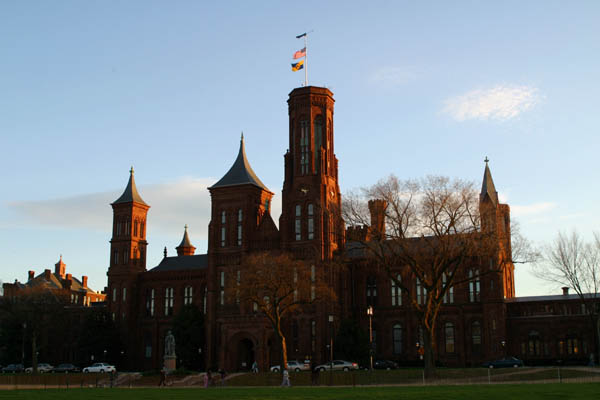The Smithsonian has just announced that it will open its first gallery outside the United States—a 40,000-square-foot exhibition space in the swanky “Olympicopolis” district that is being built up on the site of the 2012 Olympic Games.
According to the Smithsonian Institution:
The location of the project is fitting, given the background of the Smithsonian’s founder, James Smithson, an English chemist who never set foot in America.
But hold it. . . . Isn’t this a bit odd? Didn’t philanthropist James Smithson, who died in 1829, leave his bequest for the Smithsonian Institute to “the United States of America, to found at Washington, under the name of the Smithsonian Institution, an Establishment for the increase and diffusion of knowledge”?
Now Smithson’s unusual bequest—controversial at the time on both sides of the Atlantic—indicates that James Smithson intended that Smithsonian to be tied particularly to the United States. Smithson’s vision was confirmed in the 1846 congressional act that established the Smithsonian. The Smithsonian Institution, according to both Smithson’s donative intent and Congress’ action, was to be an American institution.
So, just perhaps, contrary to the Smithsonian Institution’s assurances, opening a gallery in London means that the Smithsonian Institution has absented itself from the United States without leave. But perhaps strict regard for the intent of a donor so long deceased and a long-ago congressional act didn’t stand up to the allure of establishing a gallery in London.
As if to anticipate the objection that a Smithsonian gallery abroad was outside James Smithson’s intention and the mission of the Smithsonian Institution, the Smithsonian has been quick to say that only private funds will support this English junket:
… the gallery’s annual operating costs — which the Smithsonian estimates at $5 million to $7 million — would be met by private philanthropic funds and special-exhibition admission fees, the Smithsonian said, so the plan would require no extra federal funds.
But the “no extra federal funds” doesn’t tell the whole story. An organization can only undertake so many activities at one time. If the Smithsonian board commits the leadership and staff of the Smithsonian to launching this new London gallery, they can’t undertake other projects.
One might suspect that the Smithsonian Institution settled on this London venture because the board and leadership of the Smithsonian are delighted to traipse off to London to visit the new gallery there.
What else—and where else—might the Smithsonian Institution invest its energies? Well, what about exhibitions in various cities across the United States, either temporary or permanent? Wouldn’t Kansas City, or Boise, or Fort Worth welcome a Smithsonian outpost?
I’m sure the citizenry in these cities would be delighted. Would some at the Smithsonian think a Smithsonian gallery in Kansas City a waste on the hoi polloi? After all, sneers were heard when billionaire Alice Walton established the Crystal Bridges Museum of American Art in Bentonville, Arkansas.
I don’t know enough to judge whether establishing temporary or permanent Smithsonian exhibition galleries around the country would make sense—or could be squared with James Smithson’s intention that the Smithsonian Institution be found at Washington, DC. (However, there’s already the precedent of a Smithsonian museum outside Washington but within the United States: The Cooper Hewitt Smithsonian Design Museum on Manhattan’s Upper East Side—another posh spot for Smithsonian board members and administrators to spend their time).
It seems to me that if the Smithsonian plans to open a new gallery in London, it should explain why that is to preferred to new galleries in U.S. cities. After all, didn’t James Smithson and Congress intend the Smithsonian Institution to be here in America?







You may be interested in a piece I wrote entitled Follow the Money- The Legacy Perhaps of James Smithson, located here http://idiscoveredamerica.com/?p=94. My conclusion about how and why the Smithsonian Institution was funded is more logical than the theories put forth by any of the Smithson biographers.